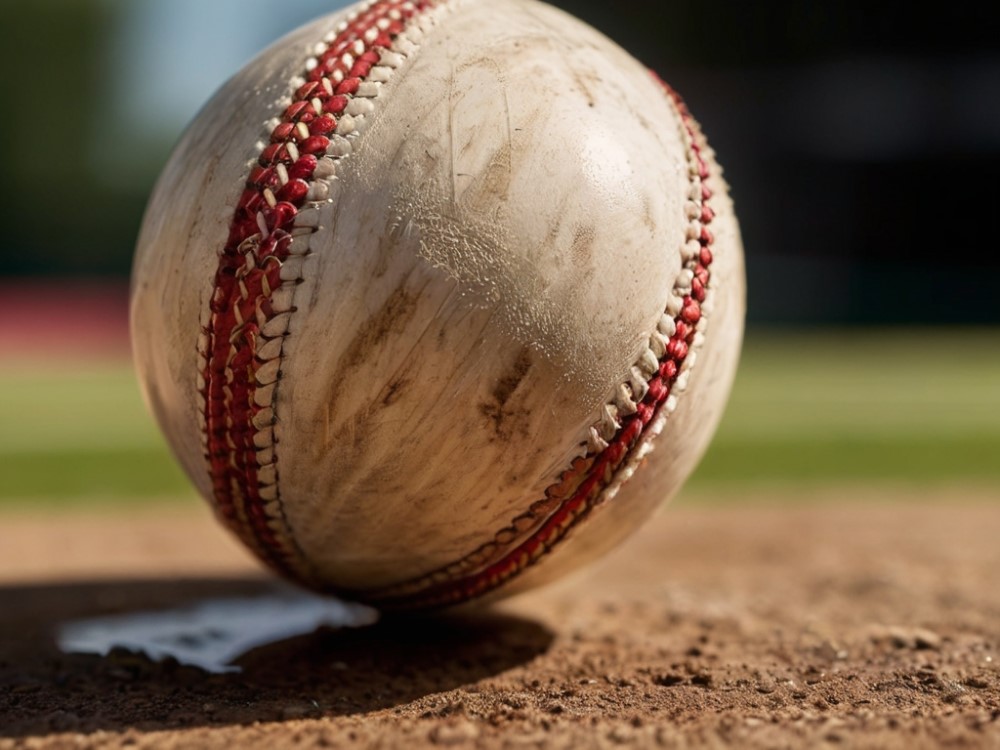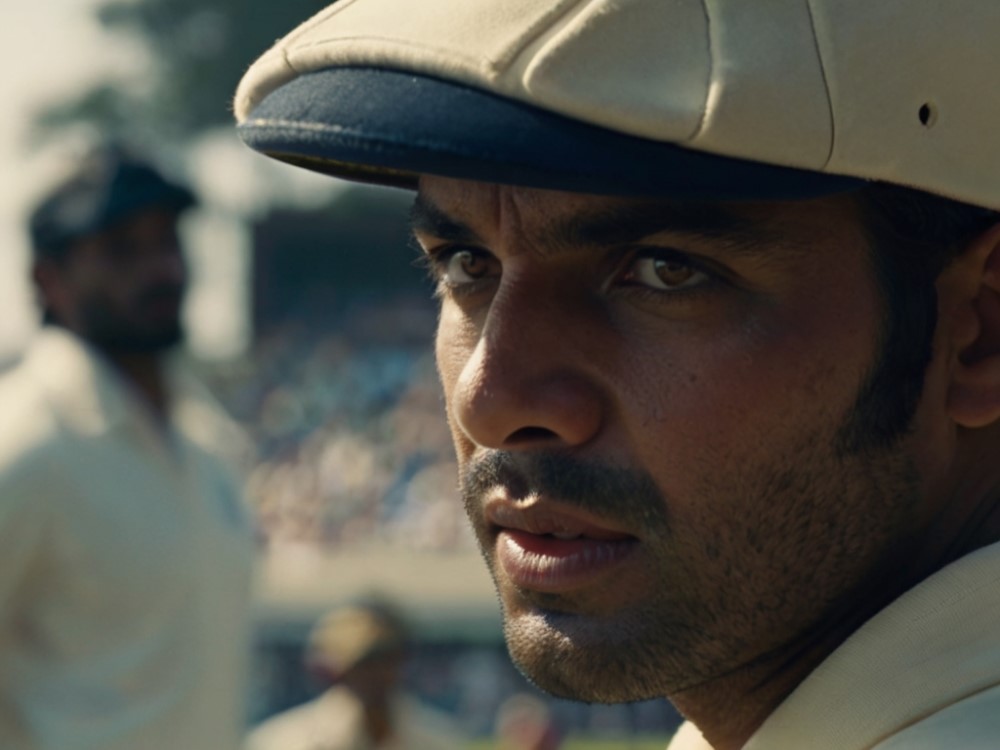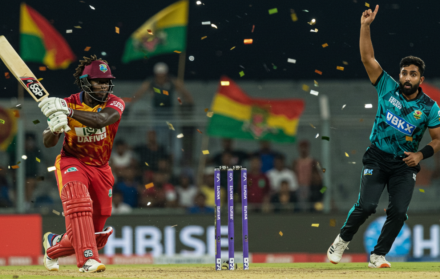
How To Master Cricket Bowling: From Seam To Spin
Are you ready to master cricket bowling and take your game to the next level? Bowling is one of the most critical aspects of cricket, requiring precision, skill, and strategy. Whether you’re a seam bowler looking to swing the ball or a spin bowler aiming to deceive batsmen with your variations, mastering the art of bowling is essential for success on the cricket field.
In this comprehensive guide, we’ll explore everything you need to know to master cricket bowling, from seam to spin. We’ll cover a range of techniques, tips, and drills designed to help you improve your bowling skills and become a formidable force on the pitch.
First up, let’s start with the basics. Whether you’re a young player just starting or an experienced bowler looking to refine your skills, our guide to cricket skills and drills for young players will provide you with the foundational knowledge and practice exercises you need to develop your bowling technique and build a solid foundation for future success.
Next, we’ll dive into the specialized role of wicketkeeping in cricket. While wicketkeepers may not always be the primary bowlers, their role is crucial in supporting the bowling attack and maintaining pressure on the opposition. Explore valuable insights and practical drills for honing your wicketkeeping skills with our guide to tips and drills for cricket wicketkeeping, ensuring that you’re ready to contribute to your team’s success behind the stumps.
For those aspiring to master the art of spin bowling, we have you covered. Spin bowling is a specialized skill that requires precision, control, and deception. Discover a series of targeted drills and exercises to help you develop your spin bowling technique and master the art of turning the ball with our guide to drills for leg spin bowling, providing you with the tools you need to bamboozle batsmen and take wickets with ease.
Additionally, we’ll explore drills specifically designed for aspiring cricket bowlers looking to refine their skills and elevate their game to the next level. From improving your run-up to perfecting your release point, our guide to drills for aspiring cricket bowlers will equip you with the essential techniques and exercises needed to become a more effective and consistent bowler.
Furthermore, we’ll share valuable tips and strategies for improving your cricket game, covering a range of topics from mental preparation to physical conditioning. Whether you’re looking to enhance your accuracy, increase your pace, or develop new variations, our expert advice will help you take your bowling skills to the next level.
Finally, for those with aspirations of becoming spin bowling specialists, we’ll provide valuable insights and guidance in our guide to tips for aspiring spin bowlers in cricket. Learn how to grip the ball, impart spin, and deceive batsmen with subtle variations, allowing you to become a potent force in any bowling attack.
With our comprehensive guide to mastering cricket bowling, you’ll have everything you need to improve your skills, develop your technique, and become a more effective and successful bowler. So, lace up your bowling boots, grab your cricket ball, and get ready to take your game to new heights!
Understanding the Different Types of Bowling Techniques

Discover the fascinating world of cricket bowling techniques in this captivating section. We’ll unravel the secrets behind different types of bowling techniques, including seam bowling, swing bowling, spin bowling, and finger spin bowling.
From the finesse of wrist movements to the art of grip, we’ll explore the key elements that make each technique distinctive and effective. Get ready to delve into the gripping world of cricket bowling and unlock the secrets to mastering these diverse techniques!
Seam Bowling
Seam bowling is a technique employed in the game of cricket where the ball is delivered in a manner so as to land on the seam, resulting in supplementary movement off the pitch. This added movement poses a challenge for the batsman.
When it comes to seam bowling, it is essential to take into account the following crucial factors:
- Grip: The bowler firmly grasps the ball with the index and middle fingers positioned on top of the seam, thus ensuring a stable hold.
- Seam position: The bowler concentrates on maintaining the seam in an upright position while releasing the ball in order to achieve optimal movement.
- Seam presentation: The objective is to land the ball precisely on or near the seam, enabling it to hit the pitch at an angle and undergo unpredictable deviations.
- Variations: Bowlers have the option to employ cutters and leg cutters to generate additional lateral movement off the pitch.
To enhance your seam bowling skills, it is crucial to engage in regular practice, analyze your technique, and strive for both accuracy and consistency. Additionally, experimenting with different grip positions and release angles can also contribute to more effective seam bowling.
Swing Bowling
Swing bowling is a technique used in cricket to deceive the batsman by causing the ball to move in the air. Here are the essential steps to master the art of swing bowling:
- Grip the ball correctly, with the shiny side facing towards the leg side.
- Dedicate your focus to generating swing by positioning the seam vertically and leaning it slightly towards the shiny side.
- Determine the nature of the swing, whether it’s conventional or reverse swing. Conventional swing occurs when the ball is new, while reverse swing happens when the ball is old and rough.
- Bowl with a consistent and smooth action to maintain control and accuracy.
- Experiment with different angles and wrist positions to discover the optimal release point for maximum swing.
By following these steps, you can become proficient in the art of swing bowling and add a valuable weapon to your bowling repertoire.
Spin Bowling
Spin bowling is a crucial aspect of cricket, requiring skill, technique, and strategy. Consider the following tips to excel at spin bowling:
- Grip: Master different variations, including leg spin, off-spin, and left-arm spin, by perfecting your grip on the ball.
- Body Position: Maintain a balanced and relaxed body position to generate maximum spin.
- Flight and Trajectory: Vary the flight and trajectory of the ball to deceive the batsman.
- Spin and Dip: Focus on spinning the ball sharply to create difficulties for the batsman.
- Control: Develop control over line and length, consistently hitting the desired spots on the pitch.
- Reading the Batsman: Analyze the batting patterns of the opponents to exploit weaknesses effectively.
- Field Placement: Work closely with your captain to set appropriate field placements that maximize your chances of taking wickets.
Finger Spin Bowling
Finger spin bowling is a technique utilized by cricket bowlers to rotate the ball through the use of their fingers. To master the art of finger spin bowling, follow these simple steps:
- Hold the ball with your index and middle fingers on one side of the ball and the thumb on the other side.
- Maintain a firm grip on the ball with your fingers to ensure optimal spin.
- Utilize your wrist and fingers to generate spin on the ball as you release it.
- Confuse the batsman by varying the speed and trajectory of the ball.
- Apply consistent line and length while bowling to create pressure on the batsman.
To improve your finger spin bowling, it is imperative to practice regularly and evaluate your performance. Seek feedback from experienced players or coaches, and work on enhancing your strength and conditioning.
Mental preparation and strategic thinking play a vital role in achieving success in finger spin bowling. Continuously refine your technique and maintain confidence in your abilities. Best of luck!
Developing Essential Bowling Skills and Techniques

Mastering the art of cricket bowling requires a deep understanding of essential skills and techniques. In this section, we’ll uncover the secrets behind developing a flawless bowling action and follow-through.
We’ll also explore the key to achieving accuracy and control over line-length, as well as mastering the crucial elements of pace and variation. We’ll dive into the captivating world of spin and turn, revealing the tricks of the trade for spin bowlers. Get ready to elevate your bowling game to new heights!
Bowling Action and Follow-through
When it comes to cricket bowling, the most crucial elements for your success on the field are your bowling action and follow-through. Your bowling action refers to how you position your body and deliver the ball. It is essential to have a smooth and consistent action to generate power and accuracy.
Similarly, your follow-through is what happens after you release the ball. A good follow-through involves maintaining your balance, extending your arm fully, and completing your body rotation.
Remember, a strong bowling action and a clean follow-through can help you generate pace, accuracy, and movement in your deliveries. Therefore, it is important to focus on perfecting these aspects of your game to become a master bowler.
To improve your technique, you can work with a coach or watch videos of professional bowlers to study their bowling actions and follow-throughs. Additionally, practicing in front of a mirror can also be beneficial.
Pro-tip: Pay close attention to your Bowling Action and Follow-through as they play a crucial role in your performance on the field.
Accuracy and Line-Length Control
Bowlers in cricket aim to achieve accuracy and control over the length of their deliveries in order to maximize their effectiveness. Here are some pointers to help improve this crucial aspect of bowling:
1. It is crucial to maintain a consistent bowling action and follow-through throughout your deliveries.
2. Put a strong emphasis on hitting the right line and length consistently, as it creates opportunities for taking wickets.
3. Take advantage of your wrist position and grip to effectively control the swing and spin of the ball.
4. Regular practice is key to developing muscle memory and enhancing your overall consistency.
5. Evaluate your performance and actively seek feedback to identify areas that need improvement.
Pro-tip: During practice sessions, visualize the trajectory of the ball and envision consistently hitting the target. This mental preparation can greatly enhance your accuracy and line-length control on the field.
Pace and Variation

Pace and variation are vital elements in the art of cricket bowling, as they keep batsmen on their toes and enhance the chances of taking wickets. When aiming to achieve pace and variation, it is important to consider the following key points:
- Developing speed: Incorporate proper strength and conditioning training that focuses on strengthening the leg and core muscles. This will assist bowlers in generating more pace.
- Bowling action: To generate pace, it is imperative to have a smooth and efficient bowling action. Improve your run-up, delivery stride, and follow-through to perfect this technique.
- Varying pace: To keep batsmen guessing and increase the likelihood of taking wickets, mix up your deliveries by using slower balls and faster yorkers.
- Using variations: Deceive batsmen and create confusion by practicing different types of deliveries, such as cutters, bouncers, and slower balls.
To master pace and variation, it is essential to engage in regular practice, analyze your performance, and mentally prepare yourself. Experiment with different techniques and delivery styles to discover what works best for you.
Spin and Turn
Spin and turn are crucial aspects of cricket bowling. When focusing on spin and turn, it is important to consider the following key points:
- Technique: Mastering the grip and release of the ball is vital for generating spin and turn.
- Finger placement: The position of the fingers on the ball plays a significant role in the direction and amount of spin.
- Wrist action: A strong and flexible wrist is essential for effectively imparting spin on the ball.
- Variation: Bowlers must be able to vary their spin and turn deliveries to keep batsmen guessing.
- Pitch conditions: The state of the pitch can impact the amount of spin and turn a bowler can achieve.
To improve your spin and turn bowling skills, practice regularly, focus on developing accuracy, and study the techniques of successful spin bowlers. Experiment with different grips, wrist movements, and flight variations to keep the batsmen off balance. Remember to adapt your approach based on the conditions and the strengths and weaknesses of the opposing batsmen.
Training Tips and Drills to Improve Bowling

Get ready to take your cricket bowling skills to the next level! In this section, we will explore a range of training tips and drills that will help you improve your bowling game. From strength and conditioning exercises to enhance your overall fitness, to target practice and field placement techniques that will sharpen your accuracy, we’ve got you covered.
We’ll dive into the importance of analysis and feedback, as well as mental preparation and strategic approaches that can elevate your performance on the cricket field. So let’s buckle up and get ready to become a master of cricket bowling from seam to spin!
Strength and Conditioning
- Incorporating strength and conditioning into your training routine is essential for aspiring cricket bowlers.
- To build strength and improve overall conditioning, consider the following key points:
- Include exercises such as squats, lunges, and deadlifts to develop leg and core strength, which play a significant role in generating power during your bowling action.
- To improve coordination and explosiveness required for a powerful delivery, integrate functional exercises like medicine ball throws and rotational movements into your workout regimen.
- Apart from strength training, engage in endurance exercises such as running or cycling to enhance stamina and ensure consistent performance throughout a long spell.
- Regularly stretch and perform mobility exercises to improve flexibility, allowing for a smooth and injury-free bowling action.
Australian fast bowler Pat Cummins serves as a remarkable example of the impact a rigorous strength and conditioning program can have. His dedicated approach to fitness not only helped him overcome numerous injuries but also propelled him to become one of the world’s leading bowlers.
With his incredible pace and sustained performance, Cummins has proven that prioritizing strength and conditioning is key to success in cricket.
Target Practice and Field Placement
- To improve your cricket bowling skills, target practice and field placement are crucial. Here are some steps to enhance your accuracy and effectiveness:
- Create drills to simulate match scenarios, focusing on hitting your targets consistently.
- Practice adjusting your line and length based on the field placement to create pressure on the batsman.
- Communicate and collaborate with the captain and fielders to strategically position yourself to exploit the batsman’s weaknesses.
- Analyze the field and the batsman’s tendencies to anticipate where the ball is likely to be hit.
Analysis and Feedback
To enhance and elevate your cricket bowling prowess, incorporating analysis and feedback is of utmost importance. Here are some invaluable pointers to take into consideration:
- It is crucial to actively seek feedback from seasoned coaches or experienced players who can identify the specific areas that need improvement.
- One effective approach is to meticulously analyze your own bowling performance by reviewing video recordings, which can shed light on any technical flaws that may need rectification.
- Embracing advanced technology, such as motion sensors or bowling machines, can provide you with precise and reliable data for comprehensive analysis.
- It is essential to be receptive to feedback concerning your bowling action, accuracy, line-length control, and variations, as this information can guide you on areas that necessitate fine-tuning.
- By making the necessary adjustments based on the analysis and feedback received, you can refine your bowling technique and continue honing your skills.
By marrying the practices of analysis and feedback with your training regimen, you can continuously evolve and master the art of cricket bowling.
Mental Preparation and Strategy

Mental preparation and strategy are crucial for mastering cricket bowling. Here are some steps to enhance your mental game:
- Visualize success: Imagine yourself executing perfect deliveries and taking wickets.
- Stay focused: Concentrate on each ball, blocking out distractions and maintaining a clear mind.
- Adapt to the situation: Analyze the game, understand the batsmen’s weaknesses, and adjust your bowling strategy accordingly.
- Control emotions: Stay calm and composed, even under pressure. Avoid getting frustrated or overexcited.
- Plan and communicate: Collaborate with the captain and teammates to devise effective bowling tactics.





